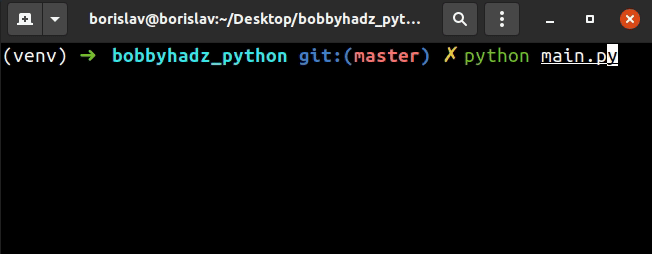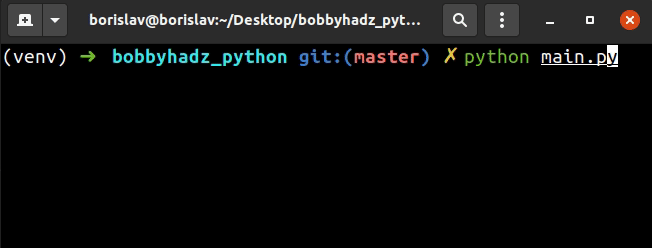Multiple lines user Input in Python
Last updated: Apr 9, 2024
Reading time·3 min

# Table of Contents
- Multiple lines user Input in Python
- Read user Input until EOF in Python
- Read user Input until EOF using
try/except
# Multiple lines user Input in Python
To take multiple lines of user input:
- Use a
whileloop to iterate for as long as the user is typing in values. - On each iteration, append the user input and a newline character to a list.
- If the user presses
Enterwithout typing in a value, break out of the loop.
lines = [] while True: user_input = input() # 👇️ if the user presses Enter without a value, break out of the loop if user_input == '': break else: lines.append(user_input + '\n') # 👇️ prints list of strings print(lines) # 👇️ join list into a string print(''.join(lines))

We used a while loop to iterate for as long as the user is typing in values.
Enter without typing in a value to exit out of the while True loop.This can be any other condition, e.g. you might have a stop word such as done
or quit.
The break statement breaks out of the innermost enclosing for or while loop.
If the user types in a value, we use the list.append() method to append the
value and a newline character to a list.
The list.append() method adds an item to the end of the list.
# Read user Input until EOF in Python
Alternatively, you can use the sys.stdin.readlines() method to read user input
until EOF.
The readlines() method will return a list containing the lines.
The user can press CTRL + D (Unix) or CTRL + Z (Windows) to exit.
import sys # 👇️ User must press Ctrl + D (Unix) or Ctrl + Z (Windows) to exit print('Press CTRL + D (Unix) or CTRL + Z (Windows) to exit') user_input = sys.stdin.readlines() # 👇️ get list of lines print(user_input) # 👇️ join the list items into a string print(''.join(user_input))

stdin is used for interactive user input.
CTRL + D (on Unix) or CTRL + Z on Windows to exit.The readlines() method returns a list containing the list the user entered.
You can use the str.join() method if you need to join the list of strings into a string.
# a # b # c print(''.join(['a\n', 'b\n', 'c\n']))
If you only need a string containing the lines, use the sys.stdin.read()
method instead.
import sys user_input = sys.stdin.read() print(user_input)

The sys.stdin.read() method returns a string containing the lines the user
entered.
Alternatively, you can use a try/except statement.
# Read user Input until EOF using try/except
This is a three-step process:
- Use a
whileloop to iterate until EOF. - On each iteration, append the user input to a list.
- Catch the EOFError
exception in the
exceptblock and break out of the loop.
lines = [] while True: try: lines.append(input()) except EOFError: lines_str = '\n'.join(lines) print(lines_str) break print(lines)

We used a while loop to iterate until EOF.
If the user presses CTRL + D (Unix) or CTRL + Z (Windows), an EOFError
exception is raised and is handled in the except block.
The break statement breaks out of the
innermost enclosing for or while loop.
# Additional Resources
You can learn more about the related topics by checking out the following tutorials:
- Taking user input boolean (True/False) values in Python
- How to Create a Date from user Input in Python
- Taking a file path from user input in Python
- How to take Float user input in Python
- Only accept a single character from user Input in Python
- Creating a Tuple or a Set from user Input in Python
- How to Validate user input in Python
- Yes/No question with user input in Python
- EOFError: EOF when reading a line in Python [Solved]

